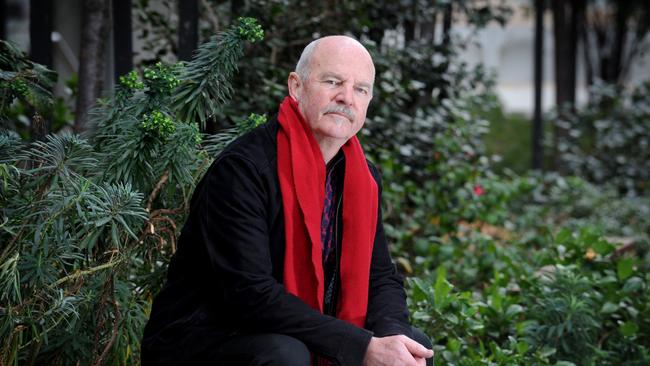Philip Salom’s The Fifth Season explores the point where isolation becomes loneliness
Philip Salom presents loneliness in its most desperate and radical form: that of individuals who disappear without trace.

Though it may seem so for many emerging from lockdown, loneliness has not always been a fact of life. Bonds between family, community and broader society were, for better or worse, stronger in the past than they are today.
Our lives are so mobile now — our employment so various, our relationships so fluid, with populations fractured along political lines and those institutions designed to bind them, deeply mistrusted — that new emotions are required to reflect our response.
For philosopher Hannah Arendt, this affective phenomenon had a political aspect. As far back as 1951, she warned of the damage done by the loss of a shared social realm: “[W]hen the most elementary form of human creativity, which is the capacity to add something of one’s own to the common world, is destroyed, isolation becomes altogether unbearable … Isolation then becomes loneliness.”
Philip Salom’s new novel, The Fifth Season, explores the point where isolation becomes loneliness. It describes the ways in which a broken polity can seep in and contaminate the private recesses of human lives. It is a fiction that presents loneliness in its most desperate and radical form: that of individuals who disappear without trace.
Narrator Jack does not retreat to the small coastal town of Blue Bay in southern Victoria to learn about the disappeared, those 38,000 Australians reported missing each year. He has come instead to write a book about those who are found, such as Somerton Man, discovered on a South Australian beach in December 1948, clean-shaven and with nothing on his person, not even labels on his clothes: just a single slip of paper in his pocket with the words “Tamam Shud”, a Persian phrase meaning “ended” or “finished”. A real mystery, it remains unsolved to this day.
“I’m writing,” says Jack, a tall man in his 60s with a shock of white hair, “a book about dead blokes who turn up out of the blue”. But what he does not realise until he is installed in the holiday cottage belonging to a young woman named Sarah, an artist from the town, is that his landlady has an unsolved mystery of her own. Her sister Alice disappeared from Blue Bay several years before.

There is something about the single-minded determination with which Sarah has reshaped her life in an effort to find her sister that arrests Jack: a mix of hope and grief trapped in unavoidable, unresolvable ambiguity.
Sarah travels the region painting giant, hyperrealist murals of her sister’s face — as well as others who are missing — on the sides of sports grounds or industrial sheds. She is an activist for the missing and a sister whose art practice is a substitute for personal mourning.
As the story proceeds and the relationship between writer and artist deepens, Jack finds his ghoulishly nostalgic project blending with the sincere urgency of hers.
The tone is darker than in Salom’s 2019 novel, The Returns, which was short-listed for the Miles Franklin, though his talent for social satire remains undimmed. As an anatomy of small-town coastal Australia, for example, The Fifth Season can be wickedly on point.
This novel is also a more overtly metafictional story than its breakthrough predecessor. Another writer, we learn, lived in Sarah’s Airbnb before Jack. He stayed for a year and wrote a novel of his time there. The second half of this novel shares its title, Toccata and Rain, with Salom’s second work of fiction, published in 2004.
That novel tells the story of a man named Simon, who wakes to discover that he has been living in a confabulated life, patched together after an amnesiac episode, in a town a continent away from his true home and former life.
Inside the fictional reality of The Fifth Season, Simon is an actual person, remembered in Blue Bay for the novel he wrote during his time there — one drawn closely from life but also replete with unkind falsification and masculine aggrandisement — and for the outsider artist makeover he performed on the backyard of Sarah’s cottage: a concrete shard-garden, paved with broken plates and bits of crockery, punctuated by bizarre patchwork urns. It looks, Jack reckons, like the vision of “someone very sober … doing something very drunk. Or like many truths, the reverse”.
And while Jack reads Simon’s narrative as a way of potentially gathering information about Alice’s disappearance, readers see it as one more instance of ghosting in the text: of doubling or shadowing the story the author is trying to tell.
None of this is as distracting or complicated as it sounds. Salom is a deeply intelligent creative writer, but he never deploys this cleverness to mystify. Instead he wants us to experience what it is to be haunted in terms descriptive (what the story is about) and formal (how the story is told). It is the strategy of an author whose approach to language is not only governed by an interest in prose.
Or as Jack puts it, talking to Sarah early on: “The uncanny … can overpower writing. The Somerton Man’s face is inscribed upon his memory now, the death mask and the black-and-white mugshots, angled from below … almost as close to death as touch. He wants more of these charged moments.” The passage concludes: “He loves moments, like a poet. He is wary of sequence.”
And, of course, sequence is also the enemy of those, like Alice, who have disappeared. Beginning, middle, end: this is how narrative longs to organise. It is like the law of gravity for storytelling. But life “doesn’t have a shape to it”, Jack considers, even though “people want a shape from it”:
People who don’t know this are often unhappy. Fate goes nowhere. Or so Jack likes to think. Some people find their own shape but can’t shape a life. It is personality versus progress. Some people shape a life but can’t find themselves. They are imposters.
Reading passages such as this one, it is hard to escape the feeling that the non-sequential, metafictional, poetic approach taken by Salom is an attempt to honour the missing — those victims of a pandemic of loneliness as fatal as any physical disease — and to approximate the simultaneous sense of presence and absence they possess.
Geordie Williamson is chief literary critic of The Australian.
The Fifth Season
Transit Lounge, 288pp, $29.99




To join the conversation, please log in. Don't have an account? Register
Join the conversation, you are commenting as Logout